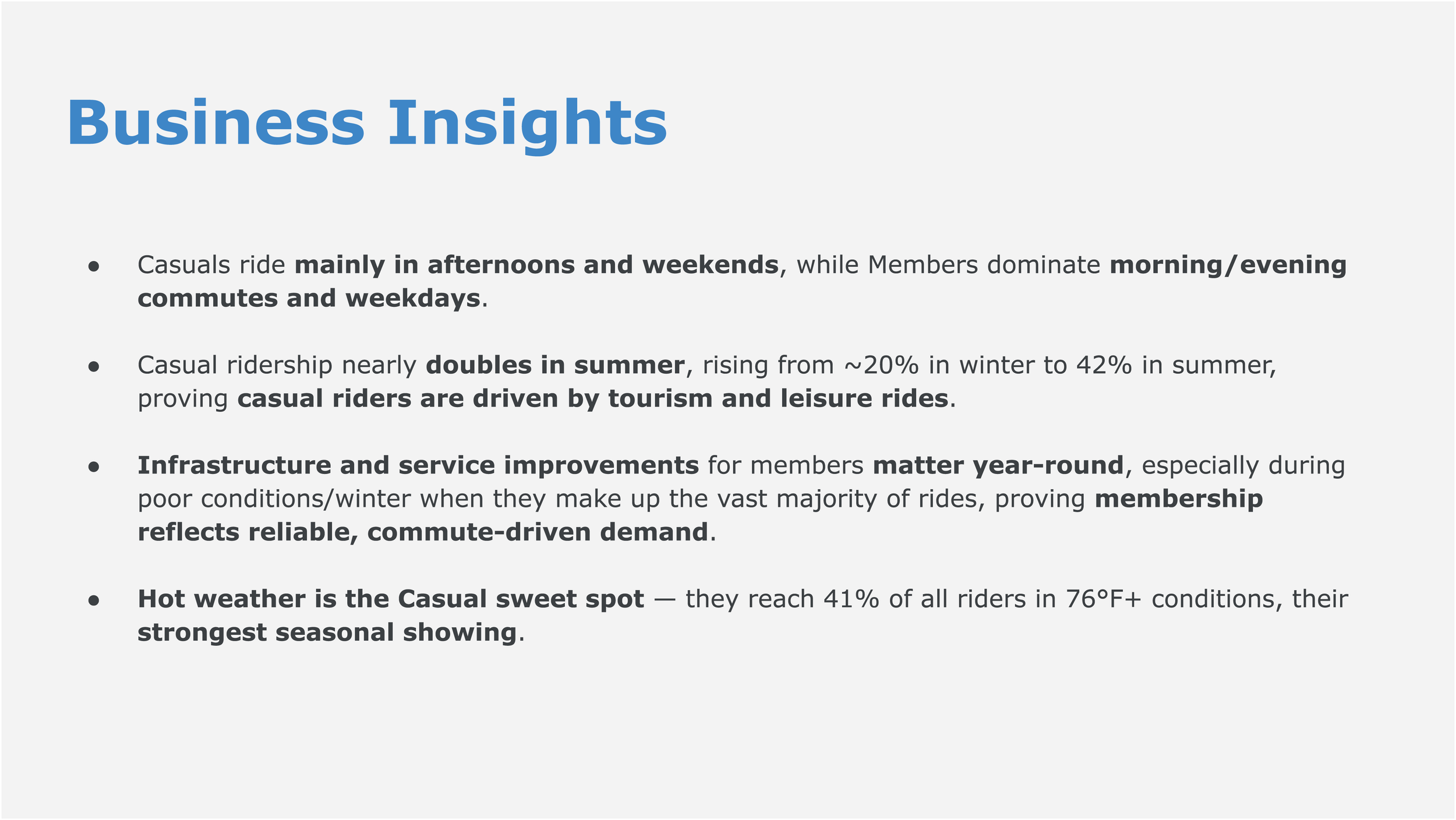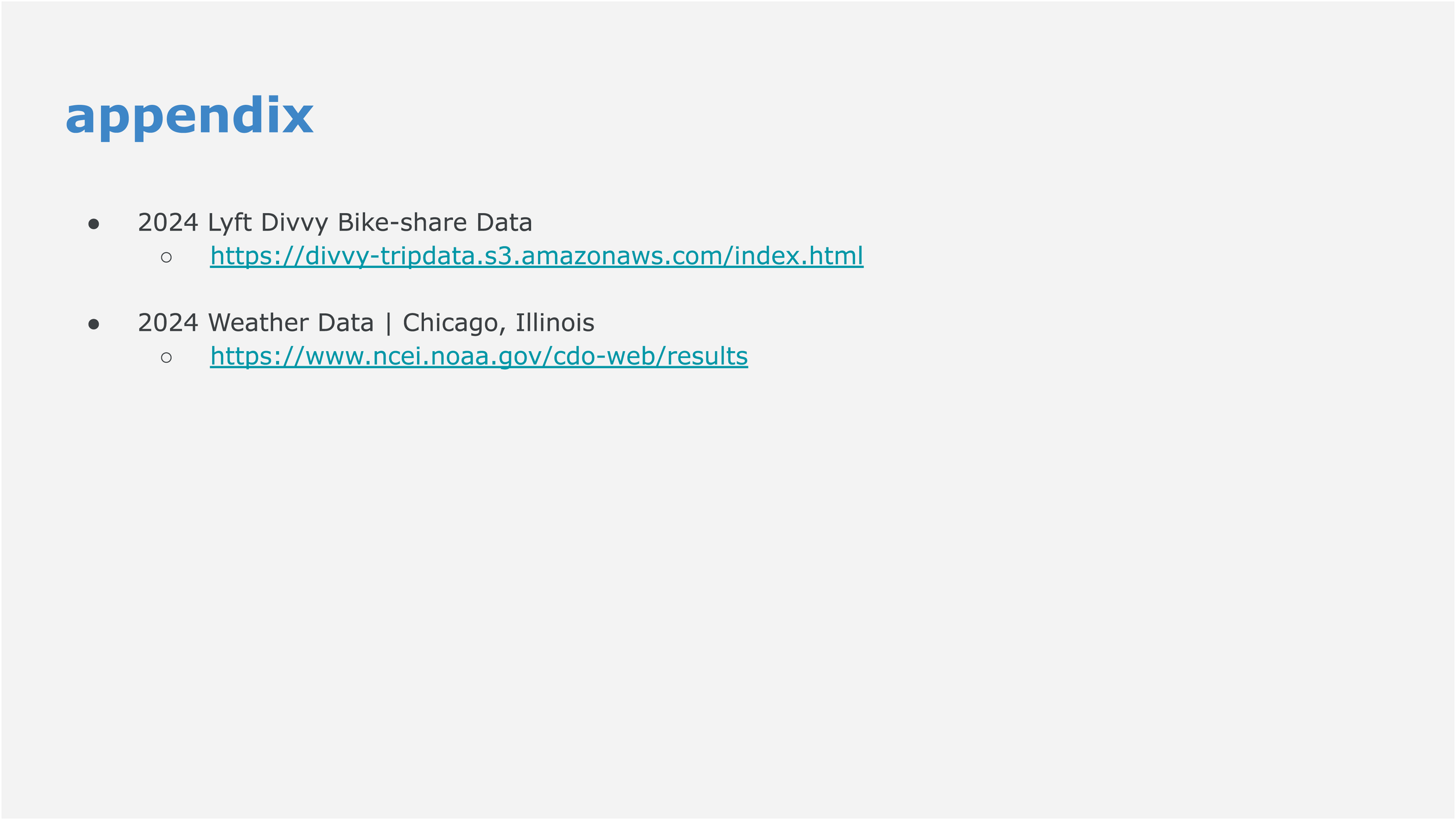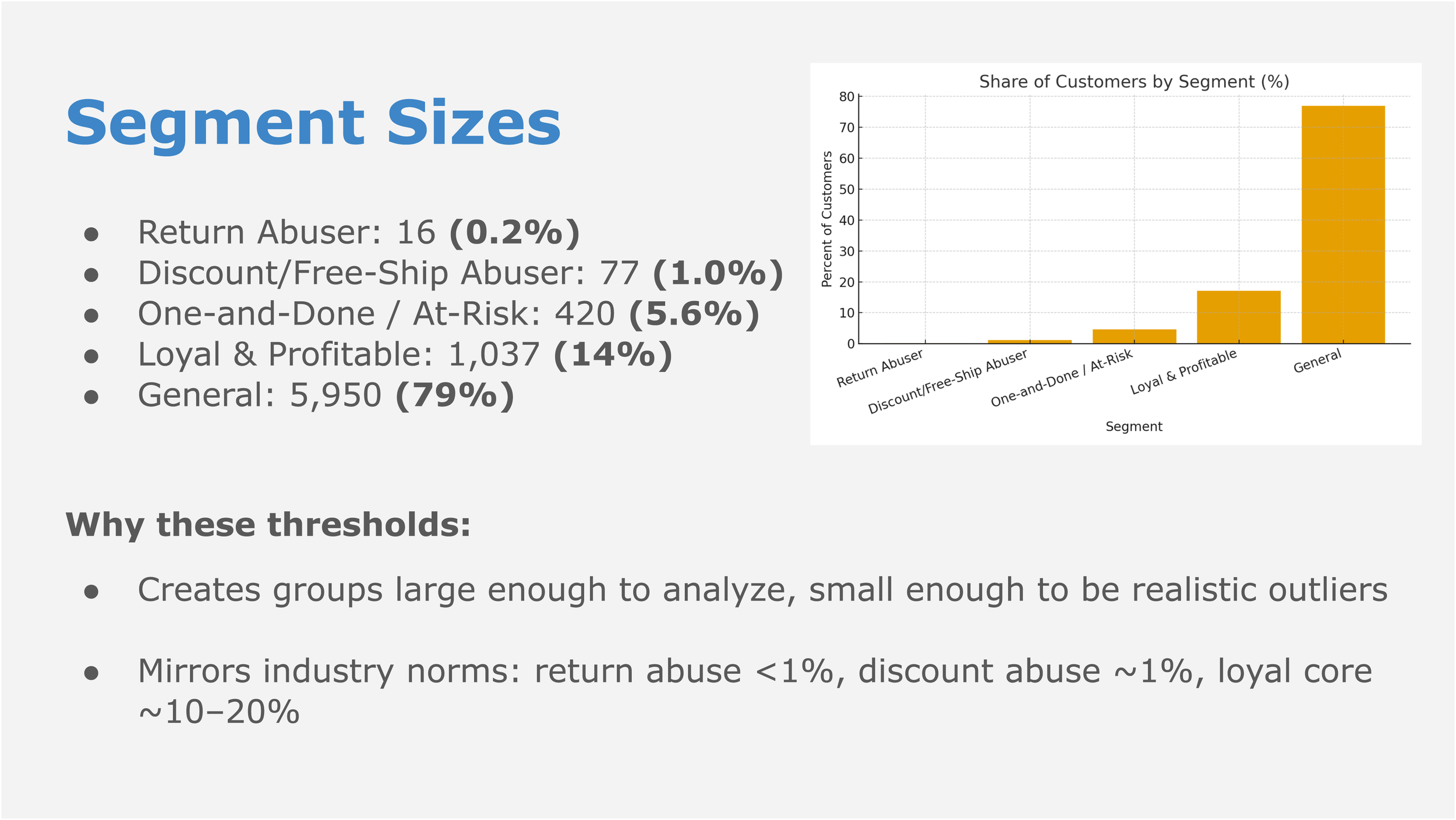Cyclistic Bike-Share Case Study
This case study analyzes real 2024 trip data from Lyft’s Divvy (Cyclistic) bike-share program in Chicago, combined with weather records from the NOAA, to explore differences between annual members and casual riders. Using twelve months of ridership logs combined with weather overlays, I examined patterns by season, day of week, time of day, and weather conditions.
The analysis shows that:
Members ride consistently year-round and through challenging conditions.
Casual riders are seasonal, weather-sensitive, and concentrated on weekends and afternoons.
These findings informed four business insights and four strategic opportunities to guide Cyclistic’s marketing, membership growth, and operational planning.
(Data provided publicly by Lyft through the Divvy system; all personally identifiable information was removed.)
Fraud and Post Purchase Behavioral Analysis
This analysis examined a full year of order and return data from an apparel retailer. using SQL in BigQuery. The objective was to uncover post-purchase behaviors that quietly erode profit — including frequent returns, discount manipulation, and one-time unprofitable buyers.
Key findings included:
High-return customers exceeding 20% return rates with minimal or negative margin
Discount and free-shipping exploitation near the $200 threshold
A small base of loyal customers generating a disproportionate share of profit
This analysis highlights how behavioral segmentation can surface hidden loss drivers and inform strategies that balance fraud prevention with customer value.
Ecommerce Fraud Analysis
For this project, I analyzed over 4.3 million ecommerce events from Google’s public GA4 dataset using SQL in BigQuery. The goal was to detect unusual behaviors that may signal fraud — such as bots spamming carts, users making rapid purchases, or broken shopping funnels.
Through this analysis I uncovered:
Seasonal shopping spikes around Black Friday/Cyber Monday
Purchases concentrated in the U.S., India, and Canada
Fraud-like patterns including cart spammers (50+ adds, 0 buys) and high-velocity purchasers (7 purchases in 10 minutes)
This case study demonstrates how data analytics can identify risks and protect revenue while keeping the customer experience smooth.










































